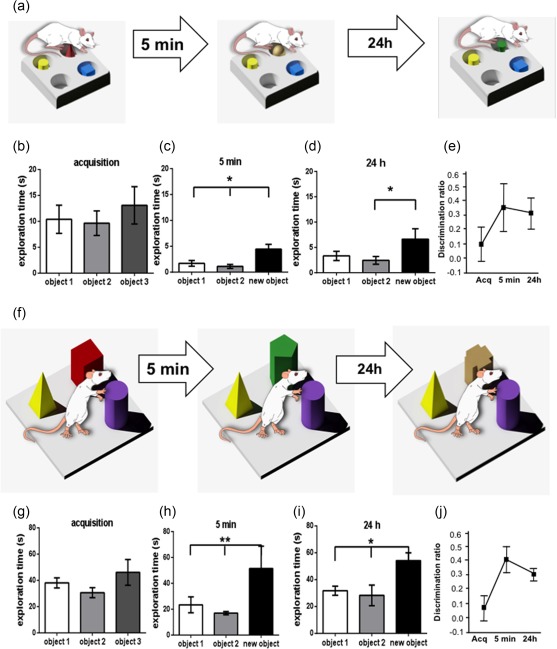Figure 1.

Spatial object recognition is evident 5 min and 24 h after acquisition. Animals were exposed to three small novel objects (positional cues) that were placed within three of four holeboard holes (a), or to three large novel objects (directional cues) that were placed on the floor of the recording chamber (f). To assess if the animals created a memory for these objects we tested for object recognition 5 min (test phase 1) and 24 h (test phase 2) after the initial novel object exposure (acquisition phase). Here, two, now familiar, objects were retained and one object was always novel. Object exploration time was assessed as a percentage of the total exploration time. In the positional cues group no statistically significant difference in object preference was observed during acquisition (b). Significantly higher exploration recognition of the new object both 5 min (c) and 24 h (d) after acquisition (Acq), and object discrimination ratios (e) confirmed that the animals had formed memories of the “familiar” objects. This was also the case in the landmark cue group (F–J). Here, no preference was evident between objects 1, 2, and 3 during the acquisition phase (g). Importantly, recognition of the new object occurred 5 min (h) and 24 h (i) after acquisition (Acq), as reflected by a significantly higher exploration of the new object compared to either object 1 or object 2, and by and landmark discrimination ratios (j). Bonferroni or Fisher LSD posthoc test: *p < .05 and **p < .01 [Color figure can be viewed at http://wileyonlinelibrary.com]
